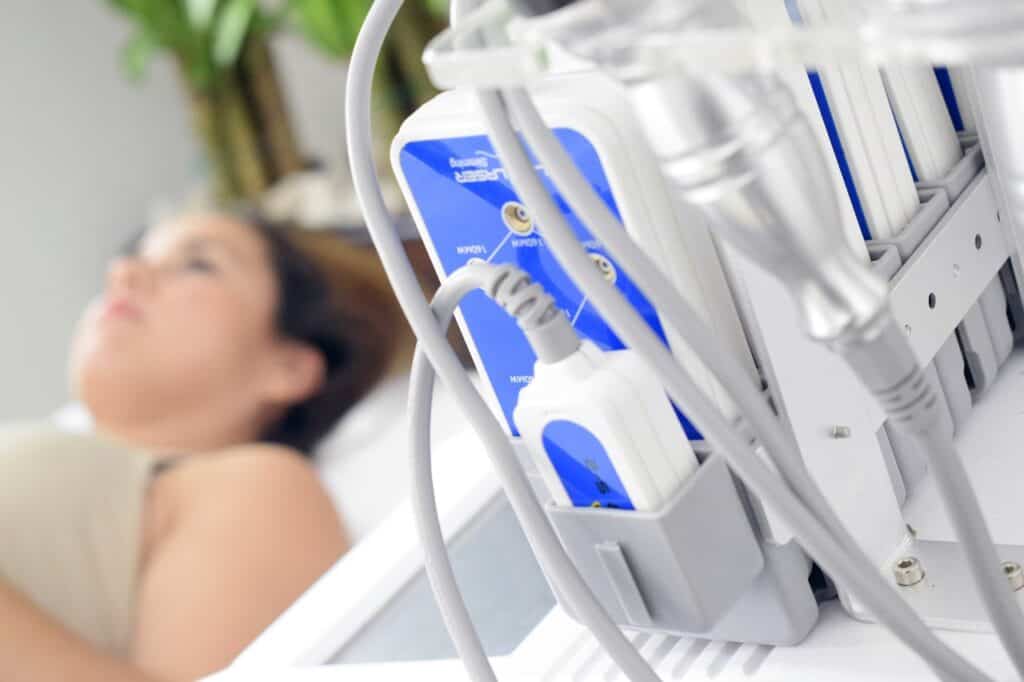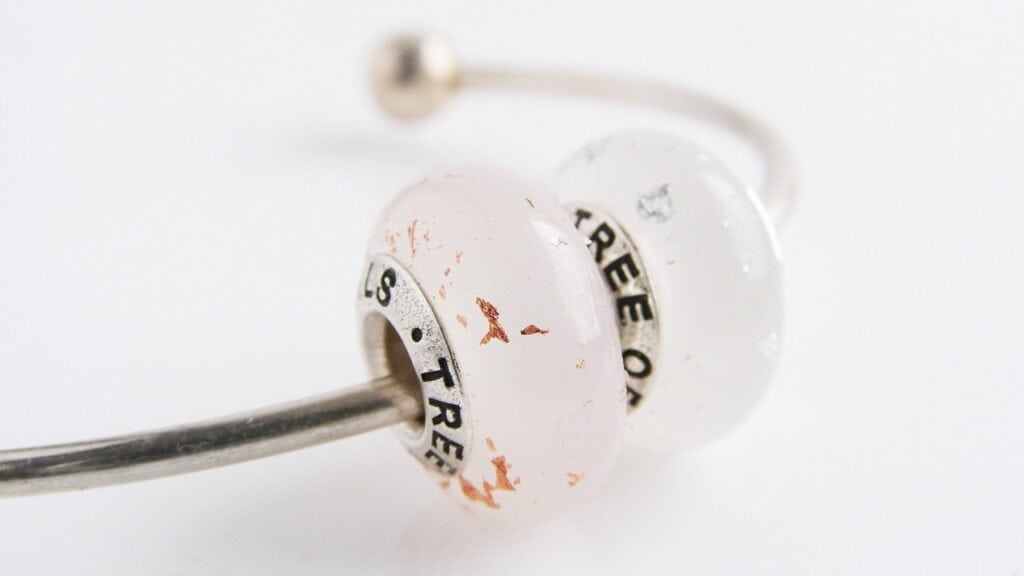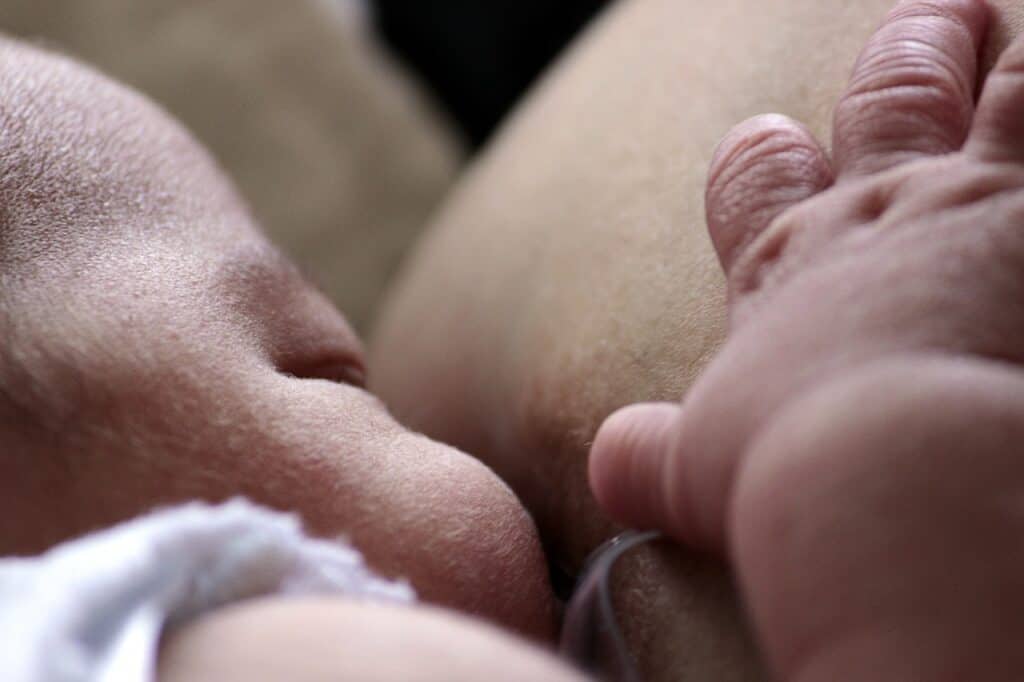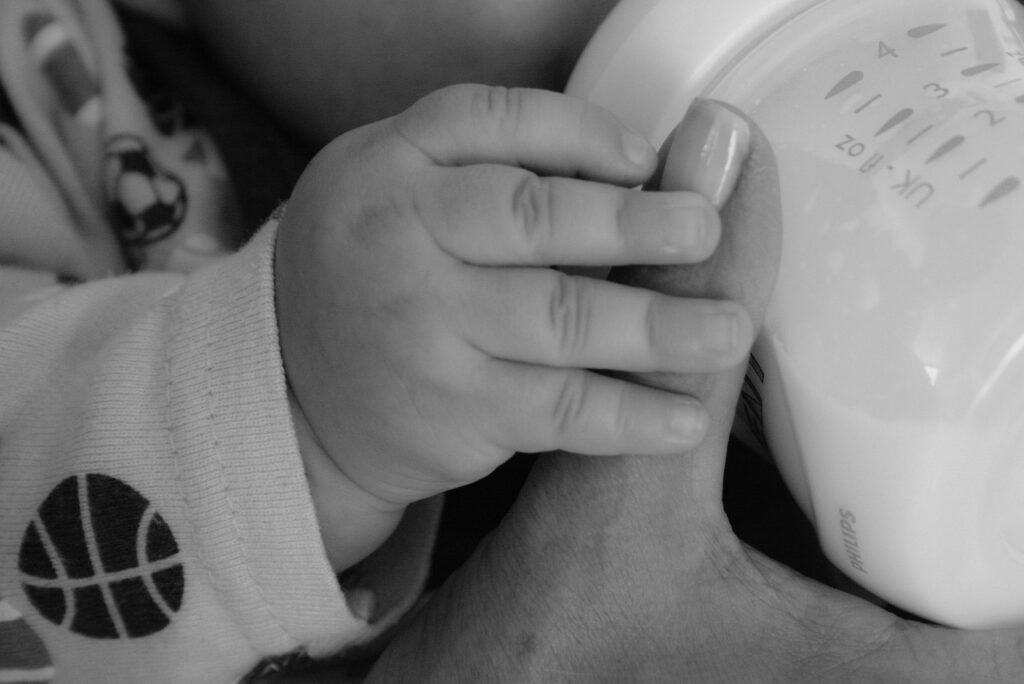Breastfeeding is a natural and healthy way to nourish a baby, but it can also be a challenging and frustrating experience for some mothers. One of the most common issues that breastfeeding mothers face is when their breasts stop responding to a pump. This can be a frustrating and stressful experience, as it can lead to a decrease in milk supply and production.
Understanding the Problem: Breasts Not Responding to Pump
Breasts not responding to a pump is a common problem for many breastfeeding mothers. This can happen for a variety of reasons, including improper use of the breast pump, a poor fitting breast shield, or simply due to changes in the mother’s body. While this can be a frustrating experience, there are techniques that can be used to improve pumping response and maintain a healthy milk supply.
Key Takeaways
- Breastfeeding is a natural and healthy way to nourish a baby, but it can also be a challenging and frustrating experience for some mothers.
- Breasts not responding to a pump is a common problem for many breastfeeding mothers, but there are techniques that can be used to improve pumping response and maintain a healthy milk supply.
- Seeking professional help and maintaining a healthy lifestyle can also help improve breastfeeding success.
Understanding the Problem: Breasts Not Responding to Pump

Breast pumping is a common practice for mothers who want to provide their babies with breast milk. However, some mothers may experience a problem where their breasts do not respond to the pump anymore. This can be frustrating and may lead to a decrease in milk supply. Understanding the problem and its causes can help mothers find a solution.
There are several reasons why breasts may not respond to the pump anymore. One possible cause is the pump itself. If the pump is not functioning properly or is not the right fit for the mother, it may not effectively stimulate milk production. In addition, using a pump too frequently or for too long can cause discomfort and decrease milk supply.
Another possible cause is the mother’s stress level. Stress can affect hormone levels and milk production. If a mother is feeling stressed, it may be harder for her to let down milk and respond to the pump.
It is also important to consider the baby’s feeding habits. If a baby is not feeding frequently enough or is not latching properly, it can affect milk production and the mother’s response to the pump. In addition, if a mother is not pumping often enough or is not emptying her breasts completely, it can signal to her body that less milk is needed, which can decrease milk supply.
To address the problem of breasts not responding to the pump, mothers can try several things. First, they can make sure they are using the right pump and that it is functioning properly. They can also try different pumping techniques, such as using massage or heat to stimulate milk production. Additionally, mothers can try to reduce their stress levels through relaxation techniques or seeking support from family and friends.
Finally, it is important for mothers to have realistic expectations and to understand that milk supply can fluctuate. If a mother is struggling with milk production, she can seek support from a lactation consultant or healthcare provider. With the right support and techniques, most mothers can successfully pump and provide their babies with breast milk.
Common Causes of Pumping Issues

Breastfeeding mothers may experience issues with their breast pump, causing them to be unable to express milk effectively. Here are some common causes of pumping issues:
Hormonal Changes

Hormonal changes can affect milk production, making it difficult to express milk. These changes can be caused by the menstrual cycle, pregnancy, or menopause. During these times, a mother may experience a decrease in milk supply, making it harder to pump.
Stress and Anxiety

Stress and anxiety can also have an impact on milk production. When a mother is stressed or anxious, her body may release hormones that can interfere with milk letdown. This can make it difficult to pump and may cause a decrease in milk supply.
Improper Pump Usage

Using a breast pump incorrectly can also lead to pumping issues. It is important to use the correct flange size, valve, and membrane for your breast pump. Using the wrong size can cause discomfort and reduce milk flow. Additionally, not using the pump correctly can lead to improper milk removal, which can decrease milk supply.
Physical Health Issues

Certain physical health issues can also affect milk production and pumping. Mastitis, a breast infection, can cause pain, fever, and redness, making it difficult to pump. Thickening of breast tissue, or breast engorgement, can also make it harder to express milk. A burning sensation while pumping may be a sign of thrush, a fungal infection.
In conclusion, there are various common causes of pumping issues that breastfeeding mothers may experience. It is important to identify the cause of the issue and address it accordingly.
Impact on Milk Supply and Production
Low Milk Supply
When breasts stop responding to a pump, it can have a significant impact on milk supply. A low milk supply can occur due to several reasons, including ineffective milk removal, hormonal imbalances, stress, or lack of proper nutrition. Breastfeeding mothers who rely on pumping to maintain their milk supply may notice a decrease in milk production when their breasts stop responding to the pump.
A low milk supply can lead to several problems, including poor weight gain in the baby, reduced milk transfer during breastfeeding, and a higher risk of mastitis. Therefore, it is crucial to address the issue of breasts not responding to a pump as soon as possible.
Changes in Milk Production
Breasts that stop responding to a pump may also experience changes in milk production. The milk may become thicker and creamier, which can make it harder to pump effectively. Additionally, the milk flow may become slower, making it more difficult to empty the breast completely.
Changes in milk production can also occur due to hormonal imbalances, stress, or lack of proper nutrition. Breastfeeding mothers who experience changes in their milk production should consult with a lactation consultant or healthcare provider to determine the underlying cause and develop a plan to address the issue.
In summary, when breasts stop responding to a pump, it can have a significant impact on milk supply and production. Breastfeeding mothers who experience a decrease in milk supply or changes in milk production should seek professional advice to address the issue and ensure the health and well-being of their baby.
Techniques to Improve Pumping Response

Breastfeeding mothers often rely on breast pumps to express milk when they are away from their babies or unable to breastfeed. However, some mothers may find that their breasts are not responding to the pump as well as they used to. This can be frustrating and discouraging, but there are several techniques that can help improve pumping response.
Hand Expression
Hand expression is a technique that can be used to stimulate milk flow and increase milk production. It involves using your hands to massage and compress the breast tissue, which can help to release milk from the milk ducts. Hand expression can be done before or after pumping to help increase milk flow and improve pumping response.
Breast Massage
Breast massage is another technique that can be used to improve pumping response. Massaging the breasts can help to stimulate milk flow and increase milk production. This can be done by using your hands to gently massage the breasts in a circular motion, starting at the outer edges and working your way toward the nipple. Breast massage can be done before and during pumping to help improve milk flow.
Hydration and Nutrition
Staying hydrated and nourished is important for milk production and pumping response. Drinking plenty of liquids and eating a healthy, balanced diet can help to ensure that your body has the nutrients it needs to produce milk. It is important to drink water or other fluids throughout the day, especially while pumping, to help keep your body hydrated.
Pumping Schedule Adjustments
Adjusting your pumping schedule can also help to improve pumping response. Pumping more often, for shorter periods of time, can help to stimulate milk flow and increase milk production. It is important to find a pumping schedule that works for you and your baby and to stick to it as much as possible.
In summary, there are several techniques that can be used to improve pumping response, including hand expression, breast massage, staying hydrated and nourished, and adjusting your pumping schedule. These techniques can help to stimulate milk flow and increase milk production, which can lead to more successful pumping sessions.
Choosing the Right Breast Pump and Parts

Breastfeeding is a natural and healthy way to feed your baby. However, there may be times when you need to use a breast pump to express milk. Choosing the right breast pump and parts can make all the difference in your breastfeeding success. Here are some things to consider when choosing a breast pump.
Understanding Flange Size
Flanges are the plastic or silicone cups that fit over the breast and nipple. It is important to choose the correct flange size to ensure comfortable and efficient pumping. Using the wrong size flange can cause discomfort, decrease milk output, and even damage the breast tissue.
Measure your nipple diameter to determine the correct flange size. Most breast pumps come with standard flanges, but different sizes can be purchased separately.
Manual vs. Electric Pumps
Manual pumps are operated by hand and are less expensive than electric pumps. They are also quieter and more portable. However, they require more effort and may not be as efficient as electric pumps. Electric pumps are powered by batteries or electricity and are more expensive than manual pumps. They are easier to use and more efficient, making them a good choice for mothers who need to pump frequently.
Suction Level and Power
Suction level and power are important factors to consider when choosing a breast pump. The suction level should be adjustable to ensure comfort and effectiveness. The power of the pump should also be considered, as some mothers may need a stronger suction to express milk effectively. Some pumps also have different modes, such as a let-down mode and an expression mode, to mimic the natural sucking pattern of a baby.
In addition to choosing the right breast pump, it is important to use the correct pump parts. This includes replacing worn or damaged parts, such as valves and membranes, and ensuring a secure fit between the flange and breast. With the right breast pump and parts, mothers can successfully express milk and provide their babies with the nourishment they need.
When to Seek Professional Help

If a mother is experiencing difficulties with pumping and her breasts are not responding to the pump anymore, it may be time to seek professional help. Here are a few situations in which seeking help from a lactation consultant or a doctor may be necessary:
Clogged Ducts
If a mother is experiencing clogged ducts, it can be painful and lead to further complications such as mastitis. A lactation consultant can provide guidance on how to properly massage the breast and use warm compresses to help alleviate the clog. A doctor may prescribe antibiotics if an infection is present.
Low Milk Supply
If a mother is struggling with producing enough milk, a lactation consultant can provide guidance on how to increase milk supply through techniques such as power pumping and proper breast stimulation. A doctor may also prescribe medication to help increase milk production.
Painful Pumping
If pumping is causing pain or discomfort, a lactation consultant can help ensure that the pump is being used properly and provide guidance on how to make the pumping experience more comfortable. A doctor may also prescribe pain medication if necessary.
Overall, seeking professional help can provide mothers with the support and guidance they need to overcome any difficulties with pumping and ensure that their breastfeeding journey is a successful one.
Returning to Work and Pumping

Returning to work after maternity leave can be a challenging time for new mothers, especially when it comes to pumping breast milk. Some mothers may find that their breasts are not responding to the pump as well as they did before, which can be frustrating and concerning.
To ensure that pumping sessions are as productive as possible, it’s important to create a comfortable and relaxing environment. This can include finding a quiet space to pump, using a comfortable chair or cushion, and playing relaxing music or sounds.
It’s also important to establish a consistent pumping schedule to help stimulate let-down and maintain milk supply. This may involve pumping every 2-3 hours during the workday, depending on the mother’s individual needs and output.
If a mother finds that her breasts are not responding to the pump as well as they did before, there are a few things she can try. First, she may want to experiment with different pump settings or flange sizes to find what works best for her.
Second, she may want to try hand expression before and after pumping to help stimulate let-down and fully empty the breasts. This can also help increase output and maintain milk supply.
Overall, returning to work and pumping can be a challenging time for new mothers, but with the right tools and techniques, it is possible to maintain a healthy milk supply and provide breast milk for their babies.
Maintaining a Healthy Lifestyle for Optimal Pumping

When it comes to pumping breast milk, maintaining a healthy lifestyle can make a significant difference in the amount of milk produced. Here are some tips to help optimize pumping sessions:
Nutrition
Eating a well-balanced diet that includes plenty of fruits, vegetables, whole grains, and lean proteins can help support milk production. It’s also important to stay hydrated by drinking plenty of water throughout the day.
Sleeplessness
Lack of sleep can negatively affect milk production. New parents should try to prioritize sleep by taking naps when the baby sleeps and asking for help from family and friends.
Caffeine
While moderate caffeine intake is generally safe for breastfeeding mothers, excessive caffeine consumption can lead to dehydration and interfere with milk production. It’s best to limit caffeine intake to no more than 300mg per day.
Cortisol
Stress can lead to an increase in the hormone cortisol, which can interfere with milk production. Finding ways to manage stress, such as meditation or yoga, can help support milk production.
Hormonal Imbalances
Certain hormonal imbalances, such as thyroid disorders, can affect milk production. Women who suspect they may have a hormonal imbalance should speak with their healthcare provider.
Polycystic Ovary Syndrome (PCOS)
Women with PCOS may experience difficulty with milk production due to hormonal imbalances. Working with a healthcare provider to manage PCOS symptoms can help support milk production.
By maintaining a healthy lifestyle and addressing any underlying health issues, breastfeeding mothers can optimize their pumping sessions and support milk production.
Related Posts:
Frequently Asked Questions
What should I do if my breast is not responding to the pump anymore?
If your breast is not responding to the pump anymore, there are a few things you can try. First, make sure that the pump is working correctly and is properly assembled.
You can also try changing the suction level or the speed of the pump. If none of these things work, you may want to consider consulting with a lactation consultant or your healthcare provider.
Why is my breast suddenly not responding to the pump?
There are several reasons why a breast may suddenly stop responding to the pump. It could be due to a clogged milk duct, an infection, or a decrease in milk supply. It could also be due to a problem with the pump itself. If you are experiencing this issue, it is important to try to identify the cause so that you can take appropriate action.
How can I tell if my breast pump is working correctly?
There are a few ways to tell if your breast pump is working correctly. First, you should make sure that the suction level is strong enough to effectively extract milk.
You should also check the pump’s parts to make sure that they are properly assembled and in good condition. If you are still unsure, you may want to consult with a lactation consultant or your healthcare provider.
What are some reasons why breasts feel full but no milk is coming out when pumping?
There are several reasons why breasts may feel full but no milk is coming out when pumping. It could be due to a clogged milk duct, an infection, or a decrease in milk supply.
It could also be due to a problem with the pump itself. If you are experiencing this issue, it is important to try to identify the cause so that you can take appropriate action.
Is it normal to have one breast not responding to the pump?
It is not uncommon for one breast to not respond as well to the pump as the other breast. This could be due to differences in milk supply or differences in the shape or size of the breasts. If you are experiencing this issue, you may want to try adjusting the suction level or the position of the pump to see if that helps.
What can I do if my breast pump is not emptying me anymore?
If your breast pump is not emptying you anymore, there are a few things you can try. First, make sure that the pump is working correctly and is properly assembled. You can also try changing the suction level or the speed of the pump.
If none of these things work, you may want to consider consulting with a lactation consultant or your healthcare provider.

Iesha is a loving mother of 2 beautiful children. She’s an active parent who enjoys indoor and outdoor adventures with her family. Her mission is to share practical and realistic parenting advice to help the parenting community becoming stronger.

